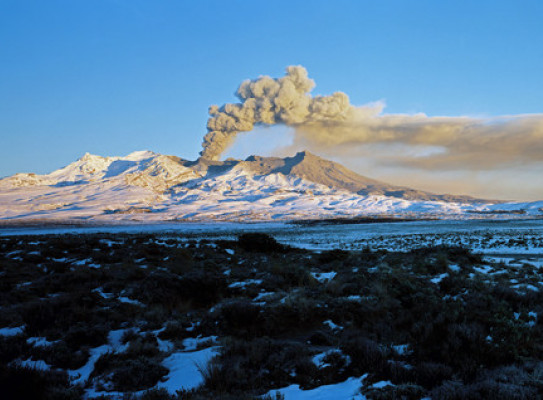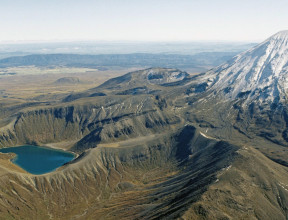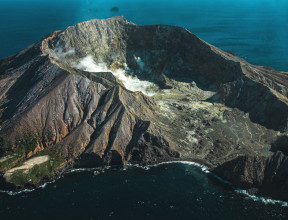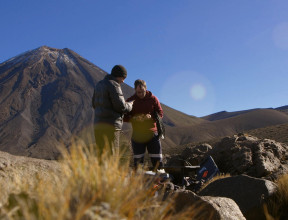
Volcanic hazards

Numerous types of hazards may result from a volcanic eruption. The type and intensity of a given hazard will vary from volcano to volcano.
Hazards may also vary from eruption to eruption as well as across the sequence of a single eruption.
Common volcanic hazards we can expect from eruptions
Many of the following phenomena will only affect an area very close to the volcano. However, volcanic ash fall can be deposited hundreds to thousands of kilometres from its source, making it the hazard most likely to affect the largest area and the greatest number of people.
Volcanic Hazards in New Zealand
Health and Safety in Volcanic Environments
The Auckland Lifelines Group has established a Volcanic Impacts Study Group to carry out research into the impacts of volcanic hazards on lifelines and associated issues. This report (PDF, 2.4 MB) provides a specific focus on meeting the requirements of the 2015 Health and Safety at Work Act for lifeline utilities staff working during or after volcanic eruptions, broadens the focus from volcanic ash to other volcanic hazards, and incorporates lessons from recent volcanic eruptions in New Zealand and around the world.
-
Volcanic ash
Volcanic Ash is derived from fragmentation as the eruption occurs, producing volcanic glass, rock and crystal particles, that can be carried for long distances downwind of the eruption site. Ash can cause health problems for humans and animals, compromise water supplies, damage infrastructure and disrupt supply chains.
-
Pyroclastic flows
Pyroclastic flows are the most destructive hazard associated with volcanic activity. They are formed when an eruption column, or parts of a lava dome, collapses, causing volcanic debris to landslide off the volcano at speed across the land in an outwardly expanding cloud of ash, rock and volcanic gas. They destroy all infrastructure in their path.
-
Lava flows
Lava flows are streams of molten rock. The distance they travel depends on the viscosity of the lava, output rates, volume, slope steepness, topography and obstructions in the flow path. While lava flows will seldom threaten human life because of their slow speed, they do destroy all infrastructure in their paths.
-
Lahar
Lahar are mixtures of volcanic ash, rocks and water that form a “mudslide” off the volcano. The source of a lahar may be a crater lake, a dam collapse or heavy rainfall washing ash from the slope of a volcano. They can occur days, weeks or even years after an eruption has finished.
-
Debris flows
Debris flows can form during the sudden collapse of an unstable portion of a volcano. This portion may be part of the growing dome or part of the flank of the volcano.
-
Volcanic lightning
Volcanic lightning is generated by the ash particles rubbing together in an ash cloud, producing intense, frequent lightning discharges. These can damage electrical installations or start fires.
-
Volcanic gases
Volcanic gases predominately consist of steam, carbon dioxide, sulphur and chlorine compounds. Hazardous concentrations of gases are generally present only very close to the crater. These are often an irritant to those down wind of a volcano.
-
Tsunamis
Tsunamis are seismic sea waves of long period caused by disturbances on the sea floor. They can be produced by submarine earthquakes, landslides/debris avalanches and underwater volcanic eruptions.
-
Hydrothermal eruptions
Hydrothermal eruptions occur in geothermal systems. They are typically smaller than volcanic eruptions and are driven by steam. These eruptions consist of a mixture of steam and mud.


